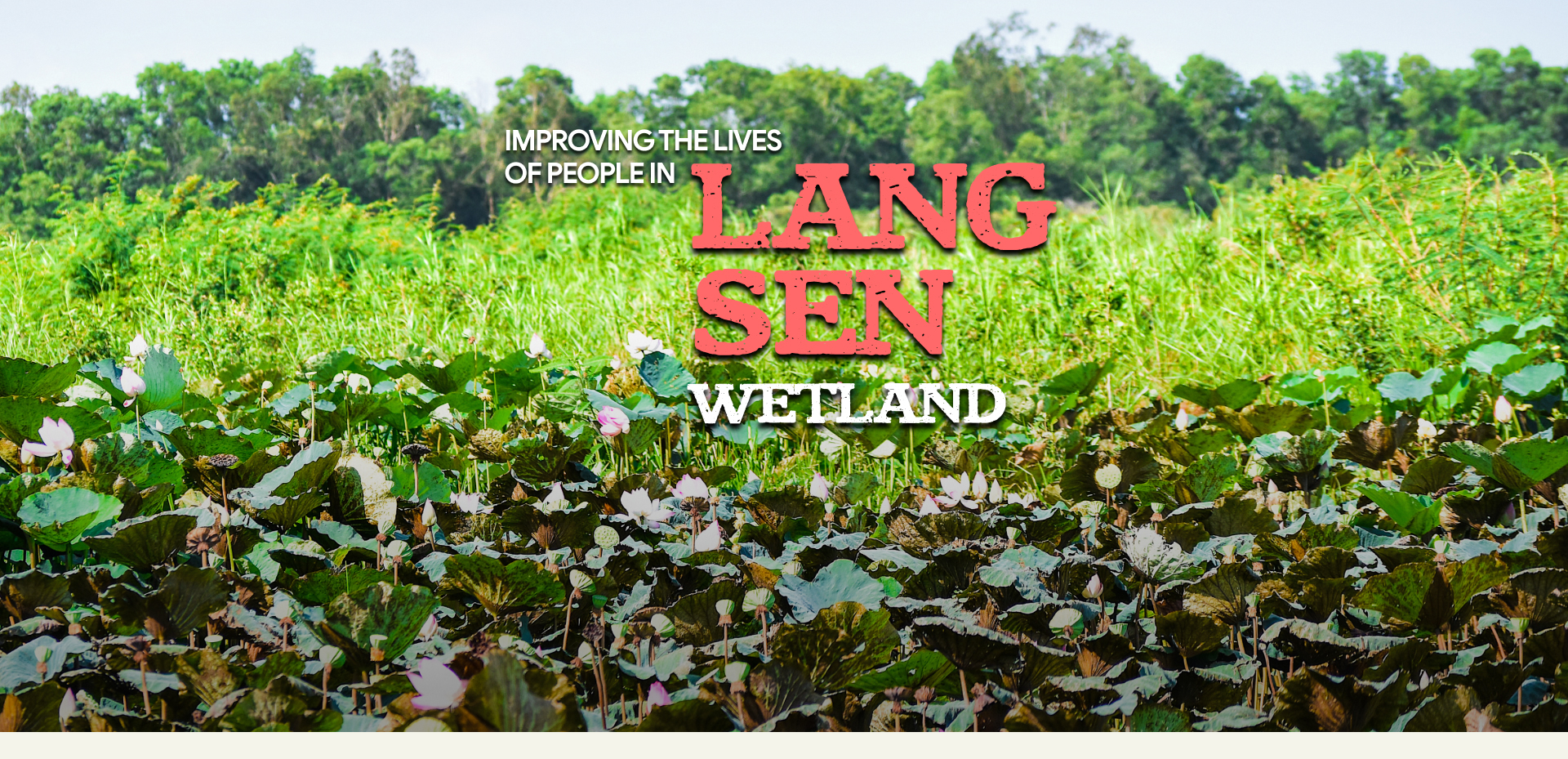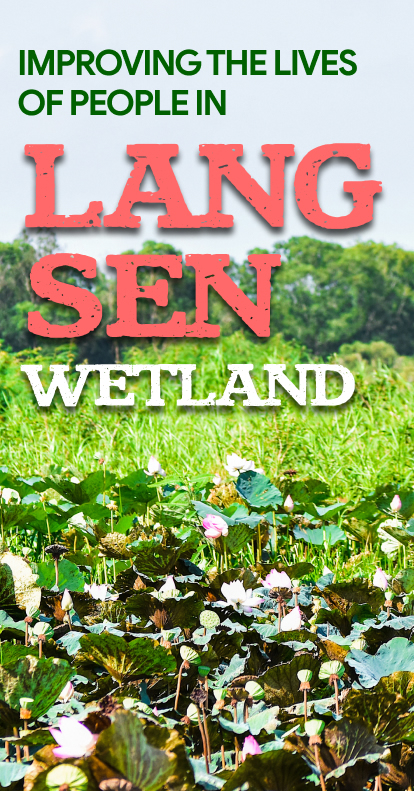In recent times, the work of conserving and preserving the habitat of natural flora and fauna in Lang Sen Wetland Reserve (Tan Hung district, Long An province) has always received attention. Particularly to increase economic value in the land of biodiversity, there are many good models here that contribute to creating sustainable livelihoods and improving the lives of local people. The reporter of Vietnam Agriculture Newspaper had a direct discussion with Mr. Nguyen Cong Toai, Deputy Director of the Reserve, and was guided to visit the natural landscape here.


Opening the story with the reporter, Mr. Nguyen Cong Toai said: Lang Sen Wetland Reserve was established under Decision No. 199/QD-UB dated January 19, 2004 of the Long An Provincial People's Committee. The total area is 5,030 hectares, including 3 subdivisions: strict conservation subdivision, economic Melaleuca forest subdivision, and biodiversity subdivision. However, currently, the Reserve only manages an area of 1,971 hectares in Vinh Chau A commune and Vinh Loi commune, Tan Hung district.
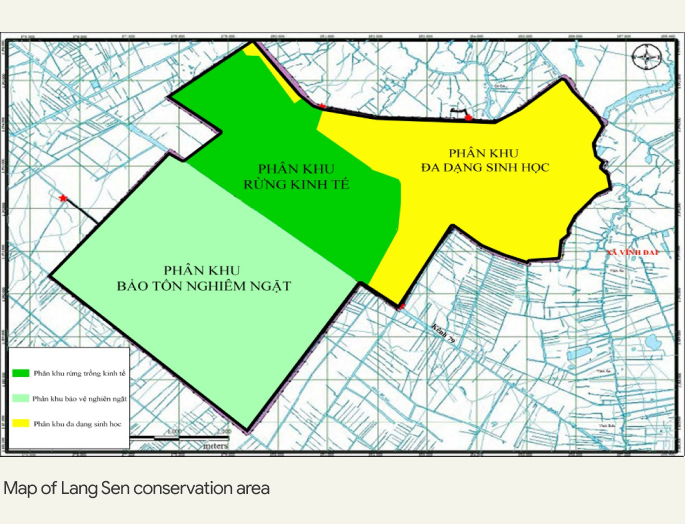
Lang Sen Wetland Reserve has three main ecosystems: the Melaleuca forest ecosystem, the seasonally flooded grassland ecosystem, and the year-round flooded ecosystem, which is a place of diverse flora and fauna. In recent years, the Reserve, in coordination with institutes and universities such as Can Tho University, the Institute of Tropical Biology, and the Southern Institute of Ecology, has investigated animal and plant species in the Reserve and recorded 261 plant species, 161 bird species, 86 fish species, 4 amphibian species, 17 reptile species, and 6 mammal species.
Through the investigation process, Lang Sen Wetland Reserve recorded 38 endangered, precious, and rare species of animals and plants according to the Vietnam Red Book, the World Red Book, and Decrees regulating endangered, precious, and rare species of animals, plants, and aquatic products such as Decree 64/2019, Decree 84/2021, and Decree 26/2019. Among them, there are many species that are particularly endangered, typically the Red-Crowned Crane, Snakebird, Painted Stock, Lesser Adjutant Stork, and Spot-billed Pelican in the bird class. Regarding fish, there are species of Pangasianodon gigas, giant barb, etc. As for amphibians and reptiles, there are yellow-headed temple turtles, giant Asian pond turtles, Southeast Asian softshell turtles, Python molurus, etc.
With a diverse terrain that is characterized by a wetland-type ecosystem of international importance for biodiversity and conservation, at the end of 2015, Lang Sen was recognized by the Ramsar Convention Organization as one of nine Ramsar sites in Vietnam and the 2,227th in the world.
Currently, the outside lands have been exploited by people for agricultural production, so feeding and sheltering places for birds and breeding grounds for aquatic species have been lost. Intensive agricultural cultivation also impoverishes plant species composition.

The establishment of the Reserve contributes to the conservation of biodiversity in general and of wetlands in particular, especially the protection and conservation of animal and plant species in the ecosystem of the Dong Thap Muoi region. The established Reserve is home to many important waterfowl species, contributes to flood regulation for the locality, is a breeding ground for aquatic species, and provides food back to the people.
In addition, the established Reserve has attracted a number of organizations, such as the International Union for Conservation of Nature and Natural Resources (IUCN) and the World Wildlife Fund for Nature in Vietnam (WWF – Vietnam), to invest in and sponsor livelihood models, helping develop the local economy. Thereby reducing people's pressure on natural resource exploitation.

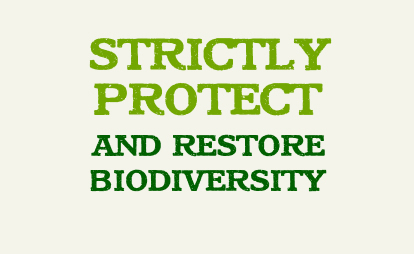
In recent times, Lang Sen Wetland Reserve has been clearly affected by climate change, with the changing and extreme weather occurring more. Especially, the historic droughts occurred in 2016 and 2020; the unseasonal rains in recent years have appeared more often; and the annual flood water has been less, thereby affecting the habitats and species residing in the Reserve. There may be many causes that directly affect the conservation and preservation of ecological values here, but the impact of climate change is the heaviest.
Due to the impact of climate change, Lang Sen Wetland Reserve has proposed many specific solutions to conserve and preserve ecological values. Of which, focus on storing water sources and preventing and fighting forest fires, which is considered a top-priority task to protect the habitat and species residing here. Regularly observe water sources and provide timely management and treatment measures to protect aquatic species. The main measures are to pump water in from outside to combat drought and raise water levels, and to spread lime and probiotics to raise pH. Besides, complete open sewers and dikes to exchange water and aquatic resources.
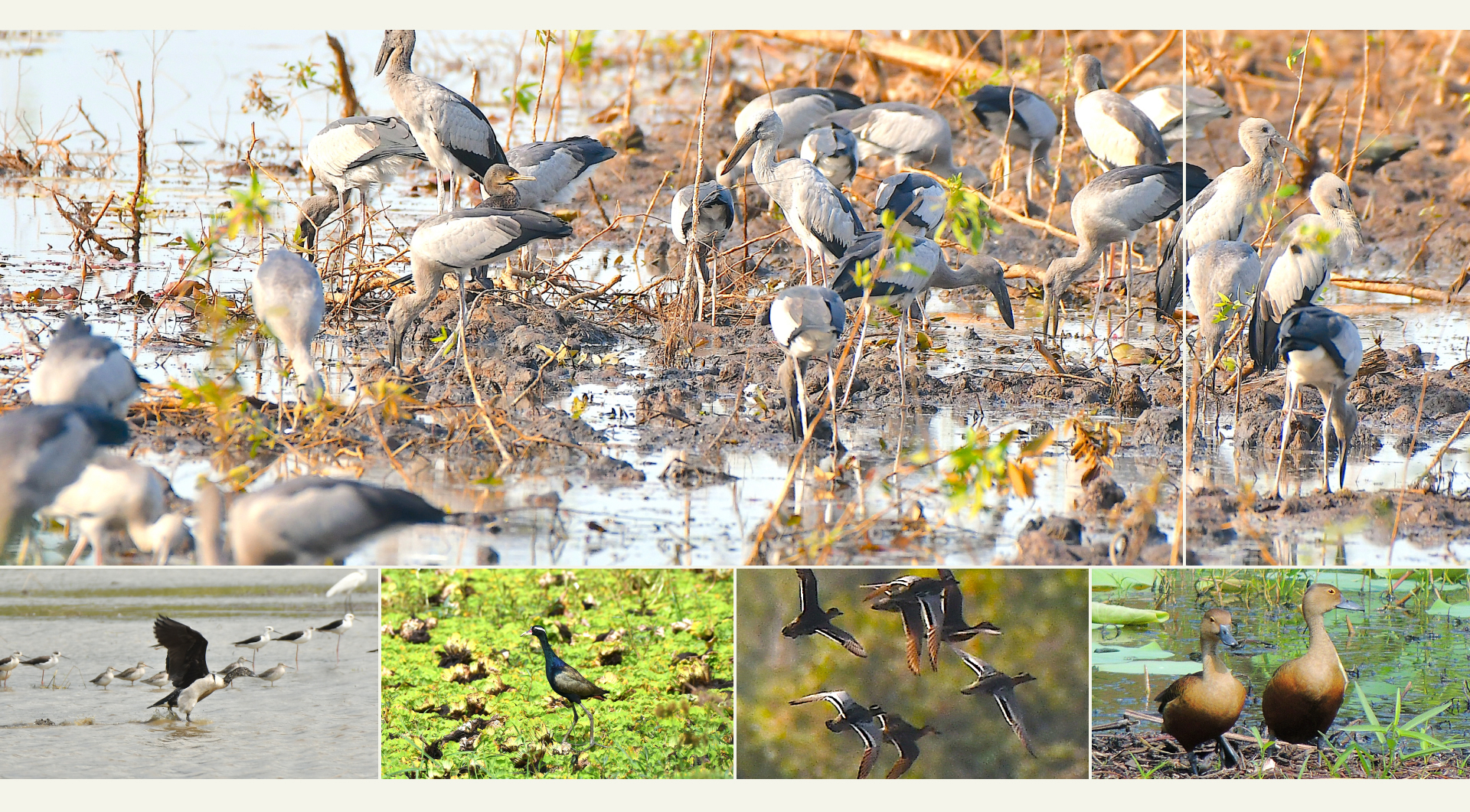
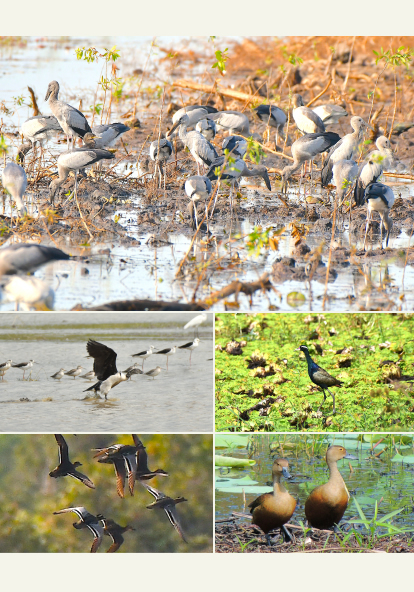
The Reserve currently focuses on strict management and protection of the 1,971-hectare subdivision. In protection work, the security force has 11 people (lacking 14 compared to regulations). This is also a hardship for them because they have to be constantly on duty at patrol posts 24 hours a day to contribute to carrying out good management and preventing people from illegally entering the Fish and Wildlife Reserve. Incidents of people entering the Fish and Wildlife Reserve have gradually decreased over the years.
Regarding biodiversity conservation and restoration, Lang Sen Wetland Reserve has restored the Eleocharis atropurpurea field to create a food source for red-crowned cranes on an area of 70 hectares in sub-zone 6 and cared for and replanted 80 hectares of wild rice annually. Propagate and plant native tree species such as Sarcocephalus coadunatus Druce, Canarium album, freshwater mangrove, Garcinia oblongifolia Champ, and Bambusa bambos with an amount of 2,000–5,000 trees/year and carry out planting and care. Replant and care for lotus fields every year. Replant Melaleuca in sub-zones 10 and 11.
Besides, build aquatic nurseries and breed precious and rare species such as yellow catfish, snakeskin gourami, sea perch, and forest snakehead. Every year, the number of individuals released into the natural environment is about 100,000 individuals/year.
Parallel to that, investigate plant and aquatic species, monitor and photograph waterfowl species, synthesize images, and print books. Observe surface water sources and propose measures to improve water sources to create a favorable environment for the development of flora and fauna, especially for the development of rare aquatic species such as Pangasianodon gigas and giant barb.

Along with that are the activities of receiving, protecting, rescuing, and releasing rare animals and forest animals from rangers and individuals into the wild. According to an official here, "Every year, organizations and individuals carry out animal release activities in the Reserve with an estimated value of several hundred million to VND 2 billion."
Along with conservation activities, officials here also investigate and identify invasive alien species such as pistia, water hyacinth, mimosa, golden apple snail, and genetically modified species and develop a plan to destroy, prevent, and stop their intrusion so as not to cause negative impacts on the environment and native creatures in the Lang Sen Ramsar site.
Scientific research is also focused on by the unit, with activities to investigate and evaluate aquatic resources in Lang Sen Wetland Reserve; restore a 30-hectare weddy rice field; and restore the flock and produce Le Nau bird breeds in Lang Sen Wetland Reserve.
The Reserve also cooperates with organizations such as IUCN, WWF – Vietnam, and Coca-Cola Vietnam to conduct training for the Reserve's officials and employees on dissemination work for people in the buffer zone, using tools and software to protect the environment and natural resources.


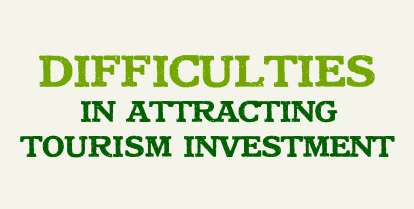
Nature has bestowed Long An province with Lang Sen land, which has been recognized as the world's Ramsar site and has become a unique destination on the Long An tourist map. Despite an extremely rich flora and fauna ecosystem, up until now, the Reserve has not been exploited for tourism because facilities are still limited and the unit has not attracted investors.
In recent times, the Reserve has done a very good job of managing and preserving biodiversity, but there are still some difficulties.
According to Mr. Nguyen Cong Toai, on the favorable side, the Reserve receives the attention, help, and direction of the Long An Department of Agriculture and Rural Development in carrying out the functions and tasks of the unit. Along with that, the unit also receives support from the local government and people around the Reserve in preserving biodiversity and resources and from the Forest Protection Department in forest fire prevention and fighting. Especially, the solidarity of all officials and workers has helped the unit successfully complete assigned tasks in the face of many difficulties over the past time.
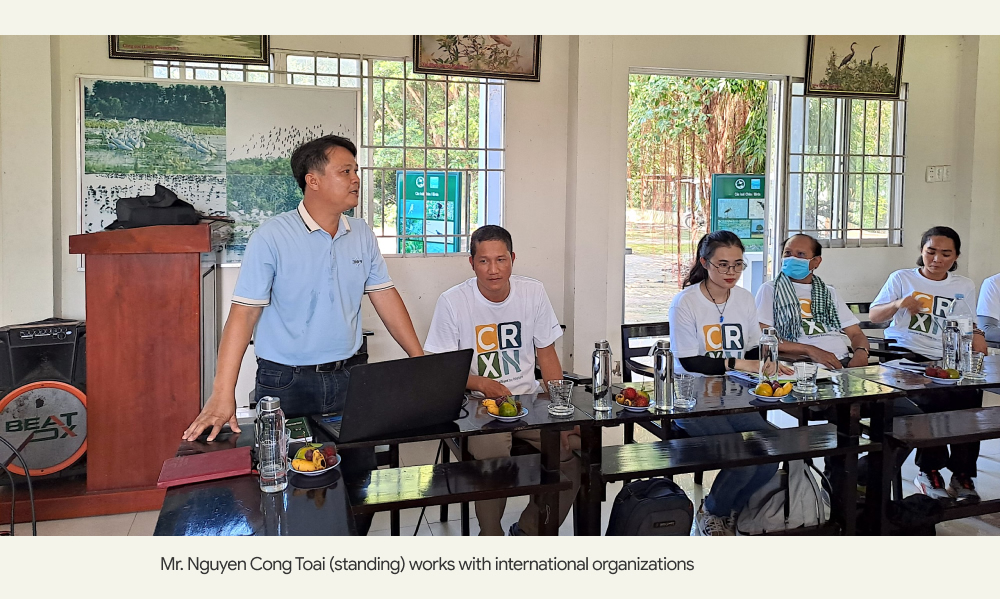
However, as mentioned above, there are still certain difficulties in this wetland, especially in the work of patrolling and management. This work is carried out regularly, but there is still a situation where people hunt birds and electrocute aquatic products inside and outside the Reserve, affecting the protection of wild animals, especially precious and rare species. There are cases where some people whose fishing tools were confiscated by the security forces entered the security station at midnight and attacked the guards to threaten and take revenge. This is also the frustration of many people doing this quite dangerous task because, even though they are equipped with self-defense tools, it is difficult to carry out!
In addition, there is a lack of professional officials and labor contracts, and facilities are degraded and inadequate to serve the work.

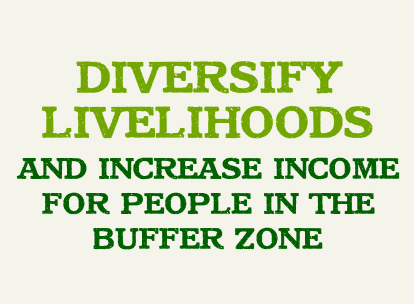
To protect and promote the achieved results, the Lang Sen Wetland Reserve Management Board has specific directions to manage, protect, and develop the ecosystem, helping to improve people's lives in the coming time. Mr. Nguyen Cong Toai shared that the Reserve focuses on strengthening patrol and protection work, coordinating with the local government, and disseminating information to people in the buffer zone to protect natural resources. Carry out forest fire prevention and fighting well. Develop plans and implement the restoration of natural resources for the Reserve, such as aquatic species, native plants, and feeding areas for waterfowl species. Regularly observe the water environment and propose improvements and management measures to create favorable conditions for aquatic species, especially rare fish species. Control waste and protect the environment inside the Reserve. Continue to investigate and destroy invasive alien species such as mimosa, suckermouth catfish, golden apple snail, etc. Besides, purchase equipment to serve the management of environmental resources for the Reserve. Strengthen scientific research to serve conservation. Coordinate with organizations in environmental dissemination and education and improve expertise for the Reserve's officials.
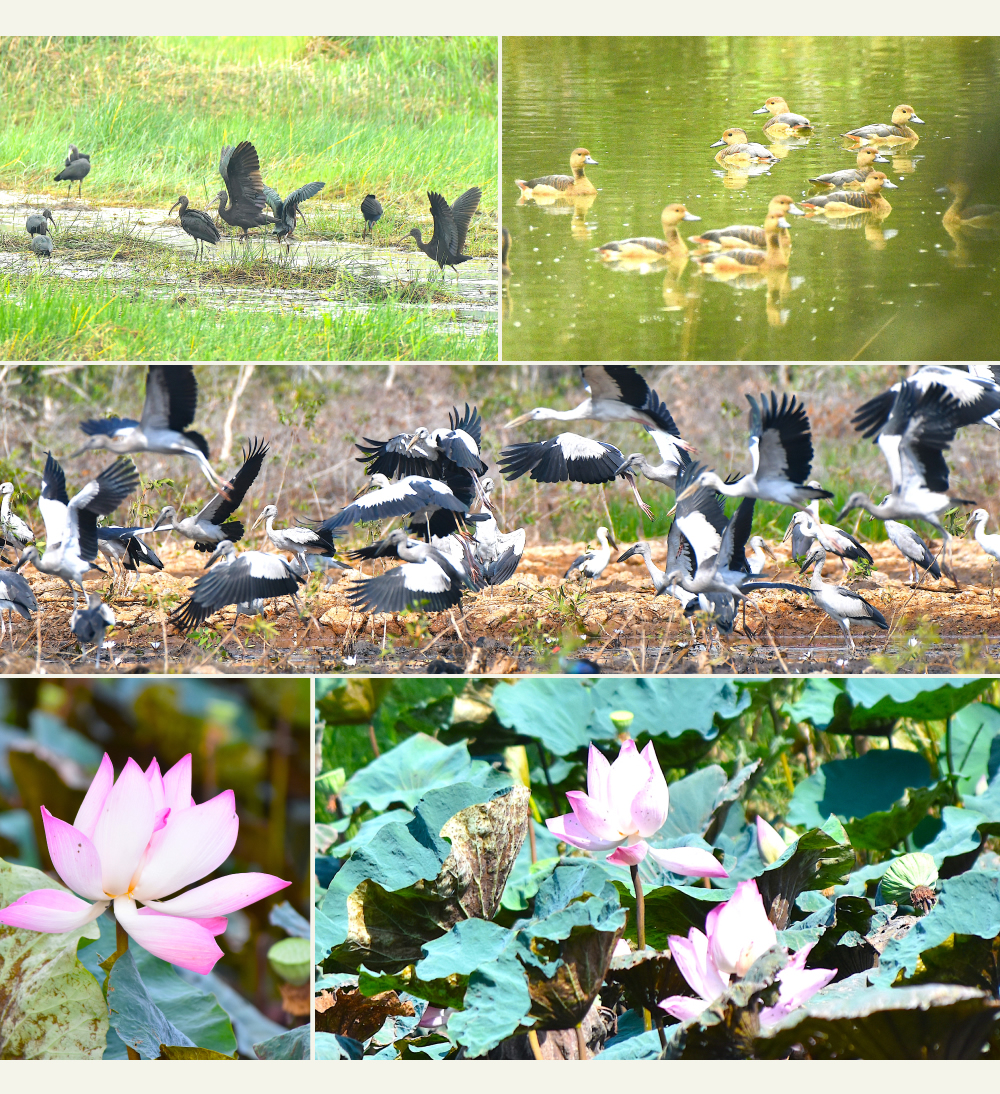
Particularly, when establishing Lang Sen Wetland Reserve, among the 3 functions and 12 tasks, creating livelihoods for people in the buffer zone is the task receiving great attention because the Reserve determined that people play a major role in the protection, conservation, and development of biodiversity. Since then, we have coordinated with many international organizations, including VCF, BunLife, and especially IUCN and WWF in the past 10 years, to implement many projects, such as communicating to improve people's awareness and protect the environment.
The Reserve's Board of Directors as well as many international organizations realize that the living conditions of people in the buffer zone are still very poor, so in recent times, the Reserve has regularly paid attention to and implemented livelihood models to develop the economy and lives for people in the buffer zone, thereby limiting people's illegal entry into the Reserve to exploit resources. Typically, the Reserve Management Board has coordinated with the World Wildlife Fund for Nature (WWF) to continue operating nine community groups to protect natural resources, investigate biodiversity, and implement livelihood models.
Among these, there are models of flood-season aquaculture such as snakeskin gourami, perch, snakehead fish, and growing rice to adapt to climate change. Or coordinating with the International Union for Conservation of Nature and Natural Resources (IUCN) to implement livelihood models for the residential community in the buffer zone on growing root lotus and seed-pod lotus; growing rice in the floating season; and organizing training courses on lotus silk drawing techniques to develop the economy of people in the buffer zone.
At the same time, to promote the value of Lang Sen biological land, as for the buffer zone located in the wetland conservation planning area, Long An province has also directed the locality to accelerate the application of high technology in production to increase income per unit of area. Through these models, people's economic lives are also improved, from which they become propagandists for the Reserve to protect biodiversity here.
Planting 340,000 Melaleuca trees to restore 17 hectares of special-use forest
On April 18, 2023, Mr. Nguyen Van Ut, Chairman of the Long An Provincial People's Committee, issued Decision No. 3177/QD-UBND on receiving non-refundable aid that is not part of the official development support of foreign agencies, organizations, and individuals for Vietnam for the project "Restoring 17 hectares of special-use forest in Lang Sen Wetland Reserve" in Tan Hung district sponsored by the International Union for Conservation of Nature (IUCN-Vietnam).
Accordingly, the project has a total investment capital of VND 2,465 billion, equivalent to USD 105,117, and is 100% funded by the International Union for Conservation of Nature (IUCN-Vietnam). The implementation period is from 2023 to December 31, 2025. The implementation location is in Sub-zone 11, Lang Sen Wetland Reserve, Vinh Loi commune, Tan Hung district, Long An province.
The goal is to restore and preserve typical species and natural landscapes in the Dong Thap Muoi region. Moreover, reduce the impact of climate change and natural disasters on the management area. At the same time, serve as a shelter, breeding, and development place for aquatic species, reptile species, and especially precious bird species in the Reserve.
The Chairman of the Long An Provincial People's Committee assigned the project to the Department of Agriculture and Rural Development as the investor, presiding over and coordinating with relevant agencies and units to organize implementation and report results after the project is completed according to regulations.
Since 2017, the Long An Provincial People's Committee has decided to establish a special-use forest within the Lang Sen Wetland Reserve. Of which, the ecosystem and biodiversity conservation subdivision is a special-use forest with an area of 1,970.88 hectares. However, according to the 2021 survey results of the Reserve, the special-use forest area decreased by 139.21 hectares compared to the forest area inventory of the Vietnam Administration of Forestry in 2014. At the end of 2022, the Long An Provincial People's Committee approved the newly planted 30 hectares.
In the 2022–2024 period, about 340,000 Melaleuca trees will be planted in 17 hectares of Lang Sen special-use forest to supplement the number of dead trees and restore biodiversity. According to the International Union for Conservation of Nature (IUCN), a 17-hectare location in Lang Sen Wetland Reserve, Vinh Loi commune, Tan Hung district, previously had Melaleuca trees, but now in many locations, they have died, leading to a decline in the underwater ecosystem and migratory birds gradually losing their shelter and breeding grounds. Planting Melaleuca trees brings many values to the Reserve, specifically creating a flooded ecosystem for plants and animals such as wild birds, waterfowl, and rare aquatic products to have a shelter. In 2024, the project is mainly to clear grass, prevent and fight fires, prune weak trees, and plant additional lost trees.
Content: Minh Dam - Hoang Vu
Design: Nongnghiepvietnam
Photo: Minh Dam - Hoang Vu
Translated by: Thu Huyen


